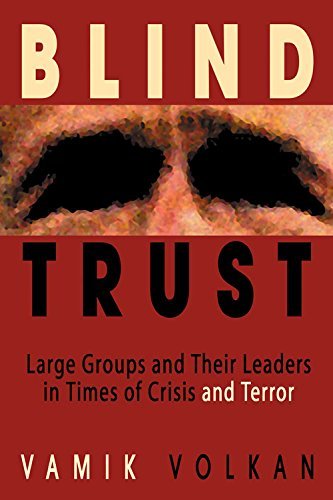Religions can fuel humane ideals, transform and support individuals performing good deeds, and stimulate creative urges and artistic expressions. At the same time, throughout history people have initiated unspeakable human suffering in the name of religion. Religion per se, then, is neutral. Religions can heal or poison individuals, depending upon specific psychological make-up and group influence. . . . .
* Winnicott [link is to pdf] saw the foundations of religious feeling as present in the normal emotional development process of the child, of which he understood the “transitional object” — the blanket that the “Peanuts” cartoon character Linus carries everywhere is an example of a transitional object — to be a universal element. (p. 128)If the child’s development is normal, he or she eventually develops an acceptance of the “not-me” world, the indifference of the universe, and, accordingly, to logical thinking. However, people also need “moments of rest,” if you will, during which they do not need to differentiate between what is real and what is illusion, in which logical thinking need not be maintained, and it is in these moments that the relation to the transitional object* echoes throughout a lifetime. At moments of “rest,” then, a Christian might know that it is biologically impossible for a woman to have a baby without the semen of a man, but also believe in the virgin birth. Rationally, we might know that no one really sees angels, but we may behave as if they exist. In other words, the function of the transitional object remains available to us for the rest of our lives, in support of the religious beliefs given to the growing child by family members and other adults in the child’s environment. The need for what I am calling “moments of rest” varies from individual to individual, and from social subgroup to subgroup. Some people declare that they do not require such religious moments of rest, but perhaps they refer to the same function by different names. For example, they may “play” the game of linking magical and real in astrology, or paint abstract paintings that represent a mixture of illusion and reality.
Volkan, Vamik. 2004. Blind Trust: Large Groups and Their Leaders in Times of Crisis and Terror. Charlottesville, Va: Pitchstone Publishing. pp. 124, 129 (my highlighting)
If you enjoyed this post, please consider donating to Vridar. Thanks!


Once again, unsupported hypotheses abound (However, people also need “moments of rest,” if you will, during which they do not need to differentiate between what is real and what is illusion.) And evolution provided us with this “need” because … ? In what manner is it restful to not differentiate between what is real and what is illusion, when that period will be followed by a period in which we will be able to make this distinction. Consider buyer’s remorse. We convince ourselves that is a “good idea” or maybe even just an acceptable idea to purchase something. Slightly later we are feeling remorse … “Why did I buy that worthless piece of junk?” or “Why did I buy that chocolate cake when my weight loss diet was working so well?” or …
How do we know that the transitional objects spoken of are not still pertinent just through inertia, or they provide a focus for imaginary conversations we can’t bring ourselves to have with others?
I assume the book has more substance behind it, but I am not holding my breath.
The link to Winnicott’s pioneering article was not clear in the first post but I have underlined it now. Donald Winnicott (link in the post) was apparently the first to develop the idea of transitional objects in 1953 and the idea has been developed by Phyllis Greenacre, Arnold Modell, and Vamik Volkan. Volkan appears to have been an internationally recognized figure who was regularly invited to assist with resolving international disputes — Estonia/Russia; Serbia/Croatia; Palestine/Israel and others.
Blind Trust is available online at Scribd: https://www.scribd.com/book/232523112/Blind-Trust-Large-Groups-and-Their-Leaders-in-Times-of-Crisis-and-Terror
When you ask: “And evolution provided us with this “need” because … ?” might that not itself be a moment of rest from reality?
Does evolution in actuality “provide” us with anything for any “reason”, as if it has intentionality? If it does, then evolution is the functional equivalent of Divine providence. But if not, and if it’s just a mechanism, then how does it make sense to even ask the question? This “need” may exist simply because it has not done significant damage to humanity’s continued existence for it to die out. Not yet, anyway.
Given that human religion (and the associated “Linus blanket” phenomena) is an expression of the species evolutionary history. Then the historical “heal or poison individuals” observation is currently irrelevant. For example some tadpoles will cannibalize siblings to grow faster, while others will just eat plant sources —thus the species survives overall in an inconsistent climate with related plant food source availability. If the climate (and plant food sources) became stable for X years, then the cannibalization of siblings might continue indefinitely with no effect on the overall viability of the species —Ceteris paribus.
• It is certainly possible that an “expression of the species evolutionary history” could cause the species to become extinct in response to (or actually causing) a “Zero Day” event.